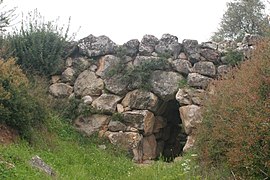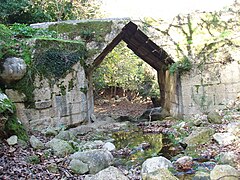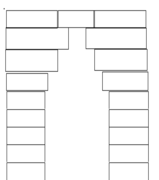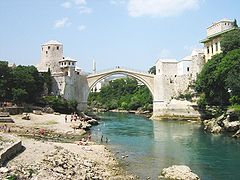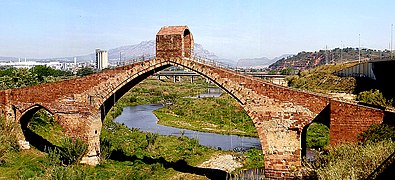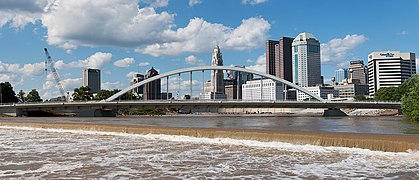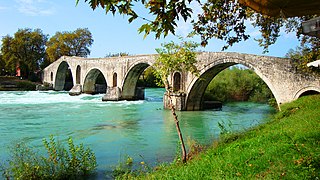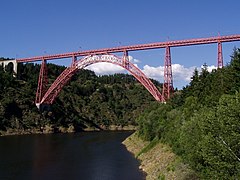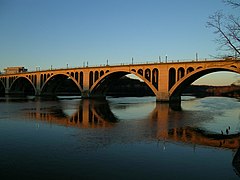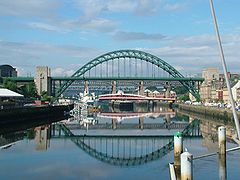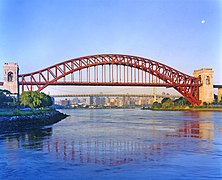
Arch bridge
An arch bridge is a bridge with abutments at each end shaped as a curved arch. Arch bridges work by transferring the weight of the bridge and its loads partially into a horizontal thrust restrained by the abutments at either side. A viaduct (a long bridge) may be made from a series of arches, although other more economical structures are typically used today.
This article is about the structure type. For specific bridges with this name, see Arch Bridge (disambiguation).Ancestor
Truss arch bridge, moon bridge (masonry)
Pedestrians, vehicles, light rail, heavy rail, water
short, but often set end-to-end to form a large total length
No
Low
Yes
Use of modern materials[edit]
Most modern arch bridges are made from reinforced concrete. This type of bridge is suitable where a temporary centring may be erected to support the forms, reinforcing steel, and uncured concrete. When the concrete is sufficiently set the forms and falseworks are then removed. It is also possible to construct a reinforced concrete arch from precast concrete, where the arch is built in two halves which are then leaned against each other.
Many modern bridges, made of steel or reinforced concrete, often bear some of their load by tension within their structure. This reduces or eliminates the horizontal thrust against the abutments and allows their construction on weaker ground. Structurally and analytically they are not true arches but rather a beam with the shape of an arch. See truss arch bridge for more on this type.
A modern evolution of the arch bridge is the long-span through arch bridge. This has been made possible by the use of light materials that are strong in tension such as steel and prestressed concrete.
